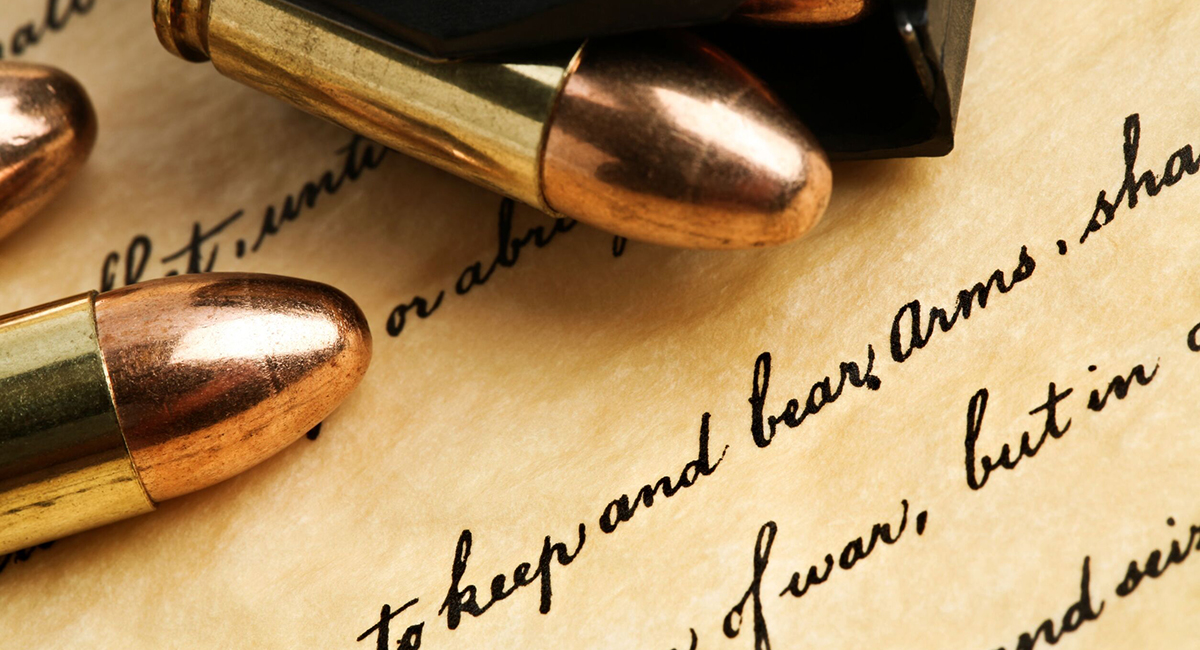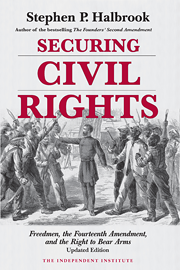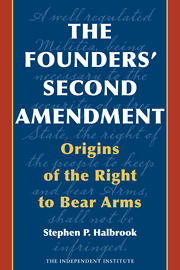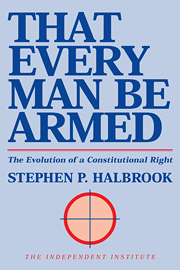The Supreme Court’s decision invalidating New York’s law giving discretion to officials to deny licenses to carry handguns for insufficient “need” held that “when the Second Amendment’s plain text covers an individual’s conduct, the Constitution presumptively protects that conduct.” A restriction may be found valid only if the government demonstrates that it “is consistent with this Nation’s historical tradition of firearm regulation.” New York State Rifle & Pistol Association, Inc. v. Bruen (2022).
Fortunately, the plain text analysis is not difficult because the Supreme Court has already defined the key terms of the guarantee that “the right of the people to keep and bear arms, shall not be infringed.” Here are some of those definitions:
- “The people” facially means “all Americans.” District of Columbia v. Heller (2008).
- “Arms” facially means “all instruments that constitute bearable arms.”
- “Keep Arms” facially means “have weapons.” Heller.
- “Shall not be infringed” facially means that the right conferred by the Second Amendment is an “unqualified command.” Bruen.
The Supreme Court has long held that the constitutional text also encompasses necessarily-included matters that are required for the exercise of a right and thus includes rights “implicit in enumerated guarantees.” Richmond Newspapers v. Virginia (1980).
The right to keep and bear arms thus presupposes the right to acquire a firearm, to obtain ammunition, to train, and to make a firearm operable. See Luis v. United States (2016) (Thomas, J., concurring in judgment); see also Heller (government cannot require firearms to be made inoperable).
Accordingly, lower courts are not free to interpret the terms of the Second Amendment de novo or to insist on a wooden literalism that would empty the Second Amendment of practical meaning.
Since Bruen, some courts have inappropriately considered subjects that are properly part of the historical analysis as part of the textual analysis. They have also taken a narrow view of the text that does not include related acts necessary to the exercise of the right. Three examples include reasoning that: 1) “the people” does not include Americans generally, but only law-abiding, responsible people; 2) to “keep arms” does not include the making and acquisition of arms; and 3) “arms” do not include magazines.
First: “the people.” Heller started textually “with a strong presumption that the Second Amendment right is exercised individually and belongs to all Americans.” Any limitations on the scope of this right for certain Americans must come from history, and the government bears the burden.
But the Third Circuit rejected an as-applied challenge to the ban on firearm possession by a felon where the conviction was for the non-violent crime of fraud. It relied on a theory that “‘the people’ constitutionally entitled to bear arms are the ’law-abiding, responsible citizens’ of the polity,” excluding those convicted of any felony. Range v. Garland (3d Cir. 2022). But the “plain text” includes felons in “the people.” Because the textual requirement is satisfied, the analysis then shifts to historical analysis. Specifically, per Bruen, “the government must demonstrate that the regulation is consistent with this Nation’s historical tradition of firearm regulation.”
While on the Seventh Circuit, now-Justice Amy Coney Barrett agreed with this view: “all people have the right to keep and bear arms,” she reasoned, but “history and tradition support Congress’s power to strip certain groups of that right.” Kanter v. Barr (7th Cir. 2019) (Barrett, J., dissenting). So, the proper analysis here is historical, not textual.
Second: “To Keep and Bear Arms.” In Defense Distributed v. Bonta (2022), the Central District of California considered a ban on “self-manufacture of firearms” and a prohibition on “the sale of the tools and parts necessary to complete the self-manufacturing process.” It stated, “Try as you might, you will not find a discussion of those concerns (or any such ‘right(s)’) in the ‘plain text’ of the Second Amendment.” Under the plain text, the district court said, the right to make and acquire arms “has nothing to do with ‘keep[ing]’ or ‘bear[ing]’ arms.”
Defense Distributed gets it wrong because the right to keep and bear arms necessarily includes the right to acquire them, which can take the form of buying or making, among other methods. The court disagreed with a decision of the District of Delaware on point, Rigby v. Jennings (2022). That court got it right in holding that the Second Amendment “protects the possession of untraceable firearms and unfinished firearms and receivers because its text covers the possession of firearms.”
Third: “Arms.” Do they include magazines? One of the cases the Supreme Court vacated and remanded after Bruen was Duncan v. Bonta. The Ninth Circuit en banc had upheld California’s ban on possession of magazines holding over ten rounds under an intermediate scrutiny, interest-balancing test. But Heller relied on text and history, and Bruen reaffirmed that tiers of scrutiny is unacceptable.
On remand, California’s lead argument is that “large-capacity” magazines are not “arms” because they are “not essential for the operation of any firearm.” But the question is not whether “large capacity” magazines are essential for any firearm to operate. The question is whether magazines in general, regardless of whether they hold only ten rounds or more (or fewer), are an integral part of the firearm and thus “arms” under the Second Amendment.
What is a magazine? It is the essential part of a firearm that stores ammunition on board the gun and positions the ammunition for firing. A magazine of some type is necessary for repeating firearms, which do not require a new cartridge (bullet) to be inserted manually for each shot. Repeating firearms have been around since the 1600s, and became common in the mid-1800s. Lewis and Clark carried a 22-round repeater on their famous expedition West while Thomas Jefferson was President. You simply cannot have repeating or multi-shot firearms without a magazine, otherwise the gun would be limited to firing a single shot.
Being detachable does not change the status of a magazine as an integral part of the gun. Some bicycles have “quick detachable” front wheels, in which a lever is operated by hand to quickly remove or re-attach the wheel without tools. But that does not make the front wheel any less integral to the functioning of the bicycle than if it were permanently affixed.
Like barrels and triggers, magazines are essential for the operation of all multi-shot and repeating firearms, which are “bearable arms.” The word “arms” must extend to these essential components of firearms. If it did not, the government could ban all magazines and limit individuals to single-shot firearms. Before Bruen the circuit courts consistently treated magazines as arms, including Ass’n of New Jersey Rifle & Pistol Clubs, Inc. v. Att’y Gen. New Jersey (3d Cir. 2018), New York State Rifle & Pistol Ass’n , Inc. v. Cuomo (2d Cir. 2015), and Heller v. District of Columbia (D.C. Cir. 2011).
Since magazines holding over ten rounds are “arms,” it is California’s burden to prove that they are “not typically possessed by law-abiding citizens for lawful purposes,” which it cannot do.
In sum, when the Second Amendment’s “plain text” covers conduct, it is presumptively protected. It is then the government’s burden to show that a restriction is consistent with this Nation’s historical tradition of firearm regulation.
















